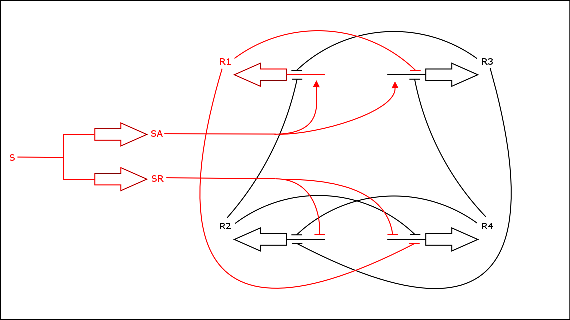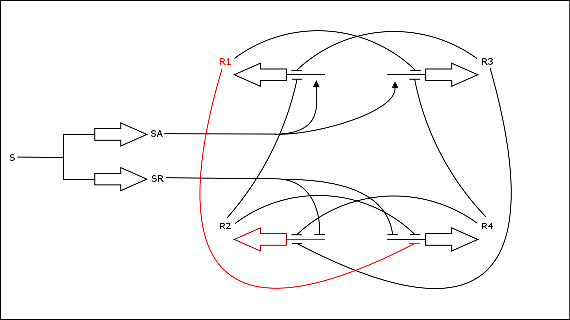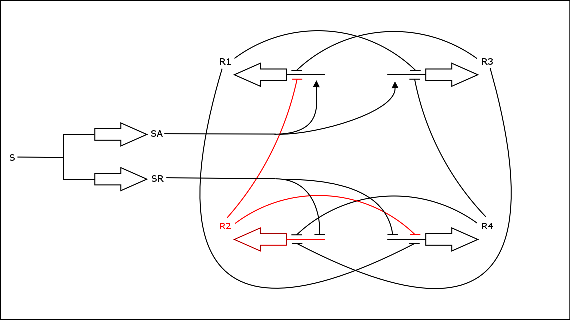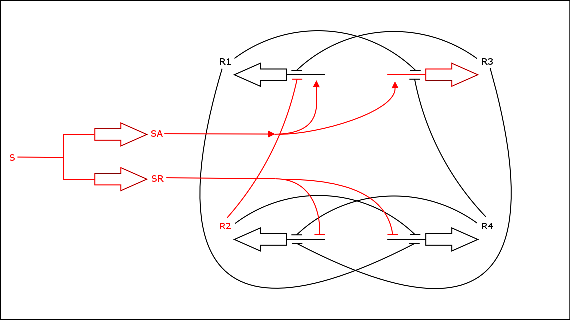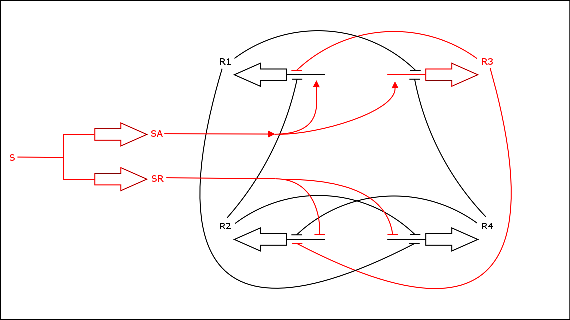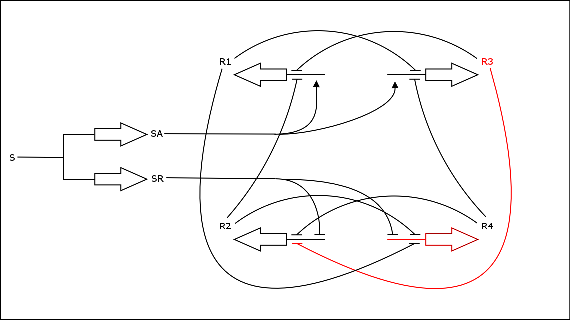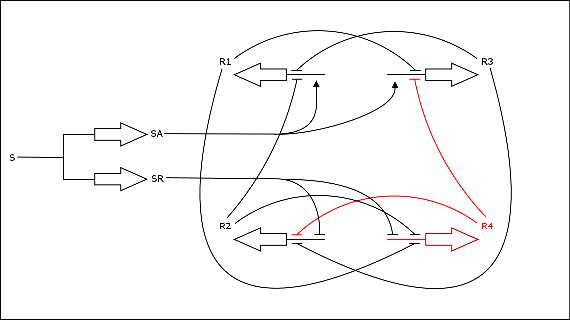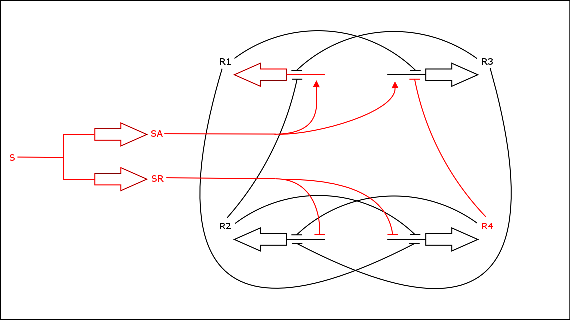Introduction
From 2006.igem.org
(Difference between revisions)
| Line 46: | Line 46: | ||
S is active, R1 is active | S is active, R1 is active | ||
| + | |||
| + | =breakdown into modules= | ||
Revision as of 09:18, 4 October 2005
The step-by-step procedure
Here you can find a detailed description of the state transitions that occur in the counter. The counter has four states, R1 to R4.
- start state
S is active, R1 is active
- transition to state R2
S is deactivated, R1 is still present (but fading) and represses R4. R2 gets produced
- state R2
S is inactive, R2 is active
- transition to state R3
S is activated, R2 is still present (but fading) and represses R1. R3 gets produced
- state R3
S is active, R3 is active
- transition to state R4
S is deactivated, R3 is still present (but fading) and represses R2. R4 gets produced
- state R4
S is inactive, R4 is active
- transition to state R1 (start state)
S is activated, R4 is still present (but fading) and represses R3. R1 gets produced
- ...and we return to the start state
S is active, R1 is active
